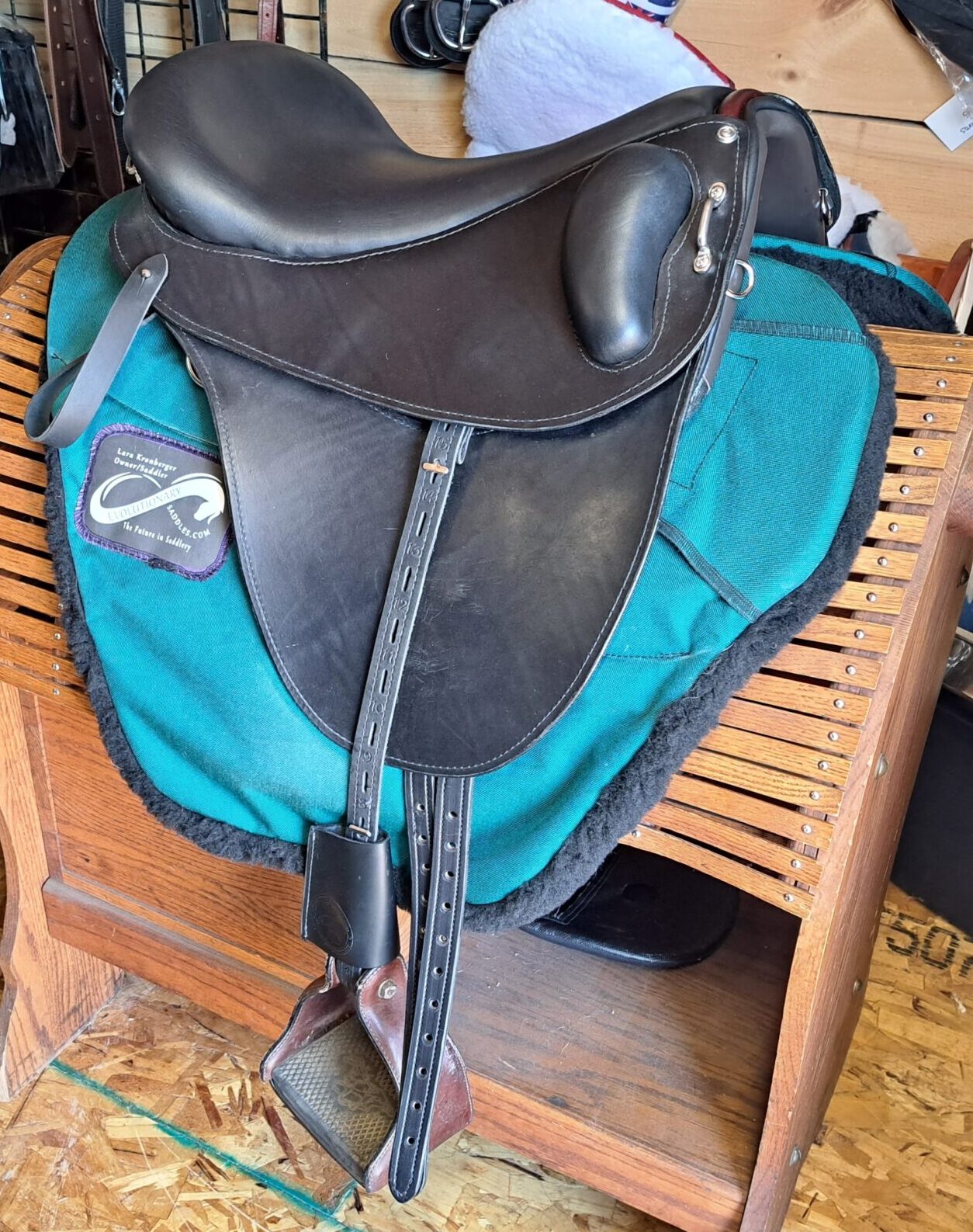
Have you ever observed your horse or a group of horses in motion, gracefully moving around the pasture? Notice how their muscles flex and ripple along their entire body, from nose to tail. It’s fascinating to witness such fluidity and grace. Yet, despite this natural fluidity, we often place rigid trees on these magnificent creatures.
Throughout the centuries, saddling our horses has primarily focused on the comfort of the rider. As a result, various saddle designs have emerged across different disciplines, creating interesting and diverse saddles. Unfortunately, the comfort of the horse has been somewhat neglected, leaving them to endure ill-fitting attire unlike any other animals.
Of course, saddlers have made attempts in the past century to improve saddle fit for horses. However, there are limitations to what a rigid tree can do for a constantly moving and changing back. On top of that, horses are expected to be obedient and docile while wearing contraptions that we would never subject ourselves to.
A Look at a Horse in Motion
Take a moment to watch the video above and observe the horse’s back, shoulders, and croup. Notice how the muscles ripple beneath the skin as the horse moves? Observe how the horse travels on a curved path, slightly bending from poll to tail. Now, consider how our typical fixed tree saddles, whether English or Western, rest on both the stationary and moving body of the horse.
Saddle fitters do their best to accommodate a moving body with an immovable object that carries weight while in motion. However, there are limitations when it comes to fitting a horse while it’s in motion.
Riders often feel more secure and perform better in a rigid tree saddle, while horses prefer a saddle that doesn’t poke, pinch, or restrict their movement. Is there a compromise that needs to be made?

Will a Compromise Need to be Made?
Watch the video above, focusing on the transition from trot to walk. Observe how the horse’s hind end comes under to carry the body through the transition and settle into the walk. Now, imagine the same transition with a rider in an ill-fitting saddle or a saddle that’s fitted while the horse is standing still. It’s impossible for a saddle that’s fitted to a stationary horse to remain well-fitted throughout the horse’s movement. That’s a fact.
So, what can we do as riders to address this issue? Is there something we can do to help our equine companions carry us better, longer, and more comfortably? How can we prevent shoulder blade pinching, girth galls, and sore spots forming behind the saddle?
Spine Relief
For a while, treeless saddles gained popularity as they eliminated the rigid fixed tree and offered a molded leather seat for a fairly secure feeling. However, they provided no spine relief for the horse. Placing the rider directly on the horse’s spine and leading to additional back issues caused by poorly balanced riders.
Panels for Horses in Motion
Then came the panel saddles, featuring broad panels that promised more even weight distribution. While providing a secure feeling with their rigid tree, these saddles could fit a wider range of horses and offered necessary spine relief. The whole saddle was effectively lifted off the horse. This marked the beginning of the evolution that led us to the innovative saddles at Evolutionary Saddles.
At Evolutionary Saddles, we have taken the panel saddle concept to the next level. Our saddles feature movable panels that move and flex with the horse’s back as they move and change shape. The sturdy yet highly flexible panel allows for better weight distribution across the entire panel, eliminating the appearance of white hairs and pressure points often seen with rigid tree saddles.

The panel’s layered construction and strategically placed hardware enable the full range of motion needed for optimal performance. It accommodates the rocker, flare, and twist of a horse’s back during every gait and as they grow and change shape. The Evolutionary Saddle takes into account the horse in motion with the rider, resulting in a saddle with a rigid tree and mounted flexible panels. Surprisingly, despite being only 3/4″ above the panels, the rider feels remarkably close to the horse.
Special thanks to Riding Warehouse for the use of the clips from their video How to Lunge a Horse Safely
In summary, it’s crucial to recognize the limitations of rigid tree saddles and explore innovative solutions that prioritize the comfort and well-being of our equine partners. Evolutionary Saddles has embraced the challenge by developing saddles with flexible panels that provide superior fit and spine relief, ensuring a closer connection between rider and horse.


